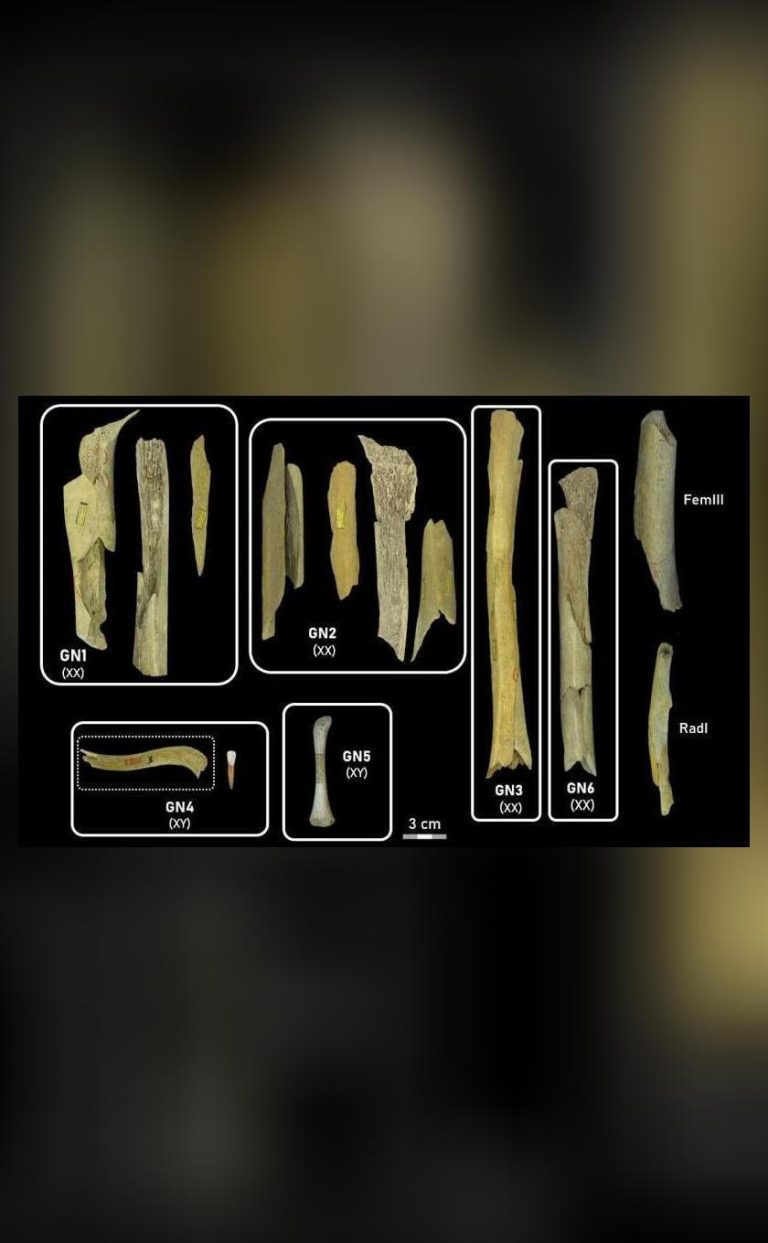
Neanderthals ate outsider women & children 45,000 years ago: Study
A recent study of human remains in Belgium’s Goyet cave system has shed new light on the behavior of Neanderthals, our ancient human relatives. The research, which analyzed 101 bone fragments, suggests that Neanderthals engaged in cannibalism, specifically targeting women and children from other communities, approximately 45,000 years ago. This discovery has significant implications for our understanding of Neanderthal behavior, social structures, and the dynamics of human evolution.
The study, which focused on the Goyet cave system in Belgium, identified a large number of human remains with butchery marks similar to those found on animal bones. These marks, which include cut marks, percussion marks, and other signs of processing, are indicative of cannibalism. The researchers found that the human remains with butchery marks belonged to women and children, who were likely from other Neanderthal communities.
The discovery of cannibalism among Neanderthals is not entirely new, as there have been previous studies suggesting that they engaged in this practice. However, this latest study provides the most conclusive evidence to date, and sheds new light on the context and motivations behind this behavior. According to the researchers, the cannibalism was likely linked to territorial conflict, which arose as Neanderthal populations were shrinking and Homo sapiens (modern humans) had begun occupying nearby regions.
During this period, Neanderthals were facing significant challenges, including climate change, resource competition, and the arrival of new human species. As their populations declined, they may have become more aggressive and competitive, leading to conflicts with other Neanderthal groups. The study suggests that these conflicts may have resulted in the killing and eating of women and children from other communities, possibly as a means of asserting dominance or acquiring resources.
The analysis of the bone fragments revealed a range of butchery marks, including cuts, scrapes, and percussion marks. These marks were similar to those found on animal bones, which were also discovered at the site. The researchers used a variety of techniques, including microscopic analysis and 3D modeling, to examine the bones and identify the signs of cannibalism.
The study’s lead author noted that the discovery of cannibalism among Neanderthals highlights the complexity and nuance of human evolution. “This study shows that Neanderthals were capable of extreme violence, but also that they were not mindless brutes,” the author said. “They had a sophisticated social structure, and their behavior was likely influenced by a range of factors, including environmental pressures, social dynamics, and cultural norms.”
The findings of this study have significant implications for our understanding of human evolution and the behavior of our ancient relatives. They suggest that Neanderthals were capable of complex and nuanced behavior, including cooperation, conflict, and even cannibalism. The study also highlights the importance of considering the social and cultural context of human behavior, rather than simply focusing on individual actions or motivations.
In conclusion, the discovery of cannibalism among Neanderthals is a significant finding that sheds new light on the behavior and social structures of our ancient human relatives. The study’s findings suggest that Neanderthals engaged in cannibalism as a means of asserting dominance, acquiring resources, and responding to environmental pressures. As we continue to learn more about human evolution and the behavior of our ancient relatives, we are reminded of the complexity and nuance of human history, and the importance of considering the social and cultural context of human behavior.
The study’s findings also raise important questions about the nature of human behavior and the factors that influence our actions. They highlight the need for further research into the social and cultural context of human evolution, and the importance of considering the complex interplay of factors that shape human behavior.
As we reflect on the discovery of cannibalism among Neanderthals, we are reminded of the importance of empathy and understanding in our interactions with others. We are also reminded of the need to consider the social and cultural context of human behavior, and to approach our understanding of human evolution with nuance and complexity.
For more information on this study, please visit: https://phys.org/news/2025-11-neanderthal-women-children-victims-cannibalism.html




